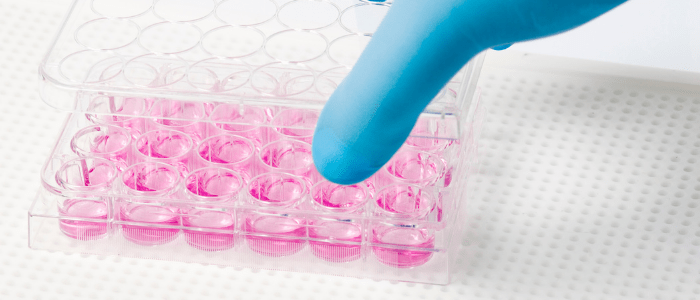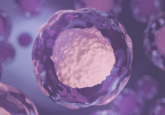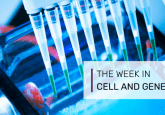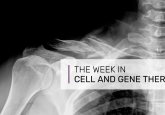Top 5 grants in regenerative medicine: January 2021

This month’s top grants in regenerative medicine, sourced from Dimensions, includes projects on: developing ‘immune-privileged’ myogenic stem cells for Duchenne muscular dystrophy, targeting leukemic stem cells by modulating hematopoietic stem cell competitiveness, using volumetric light-driven bioprinting for the precise generation of engineered tissues and organoids, paving the way for a novel and more integrative view of directional collective cell migration, and developing a conceptually new approach of self-assembled biomaterials for bone regeneration.
These top grants in regenerative medicine include:
- Developing immune-privileged myogenic stem cells for gene therapy in DMD
- Modulating hematopoietic stem cell competitiveness to target leukemia
- Using volumetric light-driven bioprinting for precise generation of engineered tissues and organoids
- Paving the way for a novel and more integrative view of directional collective cell migration
- Developing personalized self-assembled biomaterials for bone regeneration
Developing immune-privileged myogenic stem cells for gene therapy in Duchenne muscular dystrophy
This research project aims to combine the development of a safe, ‘immune-privileged’ cell with genetic engineering to correct various dystrophin gene mutations for an efficacious and cost affordable gene therapy in the field of Duchenne muscular dystrophy.
Previously, the applicant for this grant pioneered systemic intra-arterial transplantations of mesoangioblasts that proved to be safe in people with Duchenne muscular dystrophy and is currently being implemented for efficacy. Unfortunately, this personalized approach would be prohibitively expensive for healthcare systems. As such, the research team made a follow-up observation that human mesoangioblasts can be indefinitely expanded with a novel culture medium, even after genetic manipulation and cloning.
Funding amount: $USD2.6 million
Funding period: 1 January 2021–31 December 2025
Funder: European Research Council
Research organization: San Raffaele Hospital (Italy)
Modulating hematopoietic stem cell competitiveness to target leukemia
In this research proposal, the investigators hope to explore strategies to target leukemic stem cells. The team want to explore how Wnt signaling – an evolutionary conserved pathway governing stem cell self-renewal – regulates interactions between leukemic and healthy hematopoietic stem cells. They also hope to inhibit the in vivo expansion of leukemic stem cells by enhancing self-renewal and niche affinity in their natural competitors, the healthy stem cells with inborn bone marrow homing ability.
It is anticipated that these studies will improve the knowledge on the complex interactions between leukemic stem cells and hematopoietic stem cells and provide a rationale for novel treatments that might lead to a paradigm shift in the clinical management of acute myeloid leukemia.
Funding amount: $USD2.2 million
Funding period: 1 January 2021–31 December 2025
Funder: European Research Council
Research organization: University of Basel (Switzerland), University of Tübingen (Germany)
Using volumetric light-driven bioprinting for precise generation of engineered tissues and organoids
Lab-made artificial tissues and organoids promise to revolutionize medicine, tackling transplant shortage and innovating biological and pharmaceutical research. The functionality of living organs is intimately linked to their complex architecture, from the physicochemical properties of the extracellular microenvironment to a tissue-level scale.
The researchers will develop a multi-material volumetric bioprinting technology for the precise generation of engineered tissues and organoids exhibiting physiological functions. By using optical tomography, cell-laden hydrogels can be sculpted into tissue analogues within seconds upon exposure to bio-friendly 3D visible light fields.
Funding amount: $USD2.1 million
Funding period: 1 January 2021–31 December 2025
Funder: European Research Council
Research organization: Utrecht University (The Netherlands), University Medical Center Utrecht (The Netherlands)
Paving the way for a novel and more integrative view of directional collective cell migration
Directional collective cell migration is key for cellular clusters to reach their target tissues in embryogenesis, tissue repair and metastasis. This research project aims to challenge the classic chemocentric view by addressing whether and how biophysical cues such as mechanical and electrical signals contribute to directional collective cell migration in vivo.
To tackle this challenge, the team will study durotaxis (mechanical guidance) and electrotaxis (electrical guidance) at two levels: 1) a tissue level, to map mechanical and electrical properties in vivo and test their relative contribution to directional collective cell migration; and 2) a cellular level, to explore the mechanisms by which cells respond and integrate into these biophysical cues.
Funding amount: $USD2.0 million
Funding period: 1 January 2021–31 December 2025
Funder: European Research Council
Research organization: Calouste Gulbenkian Foundation (Portugal)
Developing personalized self-assembled biomaterials for bone regeneration
Expanding on the current understanding of bone regeneration, this project aims to integrate the biomechanical and immunological triggers of the healing process into an artificial bio-mimicking scaffold to specially target critical defect.
The researchers aim to develop a conceptually new approach of personalized layered 3D-printed supramolecular scaffolds. They intend to use a bottom-up multi-component co-assembly to produce tailored, layer-by-layer printed, extracellular matrix-mimicking scaffolds that not only fit the defect shape, but also mimic the bone composition around the defect.
Funding amount: $USD1.7 million
Funding period: 1 January 2021–31 December 2025
Funder: European Research Council
Research organization: Tel Aviv University (Israel)
Brought to you with support from:





